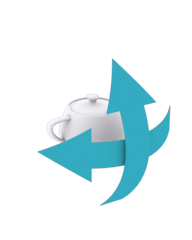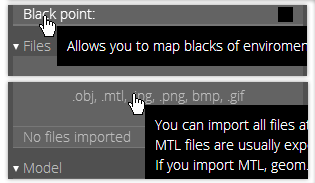/*
Here you can write your own pixel shader for the selected material. Don't forget, it is GLSL with many limitations of WebGL.
Variables passed from vertex shader (varying):
vec3 IN_Normal - world-space normal,
vec3 IN_Tangent - world-space tangent,
vec3 IN_Binormal - world-space binormal,
vec2 IN_TexCoords - texture coordinates,
vec3 IN_pWorld - world-space position.
Uniforms:
vec3 PosCam - world-space camera position,
vec4 params:
x component contains roughness (0-1),
y component contains reflectivity (0-1),
z component contains both fresnel (0-1) and emission (0-1) data:
fresnel value is extracted with this formula: fract(params.z)*10.0;
emission value is extracted with this formula: floor(params.z);
w component contains both isMetal (true/false) and opacity (0-1) data:
isMetal value is extracted with this formula: params.w>0.0;
opacity value is extracted with this formula: abs(params.w);
vec4 diffuseColor:
RGB contains diffuse color,
Alpha contains current render exposure,
vec4 topColor - top color of user-defined environment,
vec4 bottomColor - bottom color of user-defined environment,
vec4 lightPosN, vec4 lightColorN - light parameters, N should be the number (from zero).
Textures:
sampler2D diffusemap,
sampler2D normalmap,
sampler2D glossmap (actually roughness),
sampler2D reflmap,
sampler2D emissionmap;
sampler2D opacitymap;
sampler2D aomap;
sampler2D metmap;
As WebGL does not support textureCubeLod, it is not possible to change cubemap mip level per fragment.
Therefore, per-pixel roughness change is made in an awkward way: each mip is stored as a separate cubemap. Here they are:
samplerCube Cubemap;
samplerCube Cubemap1;
samplerCube Cubemap2;
samplerCube Cubemap3;
samplerCube Cubemap4;
samplerCube Cubemap5;
Functions:
float saturate(float f) - alias for clamp(f, 0.0, 1.0),
vec3 toneMap(vec3 color, float exposureScale) - performs Hable[1] tonemapping,
vec3 fixSeamsStretch(vec3 vec, float MipmapIndex, float CubemapSize=128.0) - fixes cubemap seams [2],
float BlinnPhong(vec3 lightDir, vec3 viewDir, vec3 normal, float specPow, float dotNL) - gives a Blinn-Phong highlight,
vec4 texture2DSRGB(sampler2D tex, vec2 tc) - does gamma conversion to linear.
Don't forget to do pow(output, 0.45) on your final pixel color to convert from linear to gamma! WebGL does not support sRGB conversions natively!
[1] http://filmicgames.com/archives/75
[2] http://the-witness.net/news/2012/02/seamless-cube-map-filtering/#more-1502
*/
// Pixel shader code
gl_FragColor = vec4(1,0,0,1); // output red color
Compile







